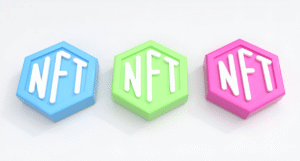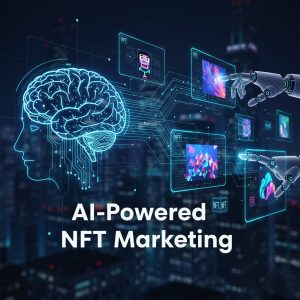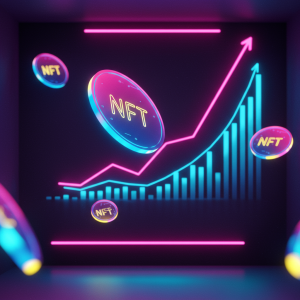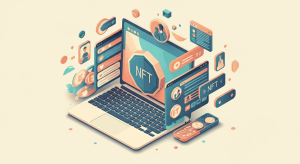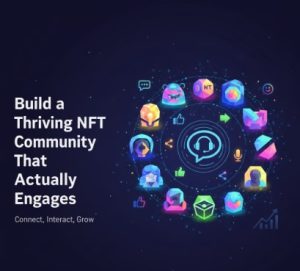Mastering Digital Space: NFT Exhibition Curation in Virtual Galleries

The emergence of blockchain-verified digital art has fundamentally transformed exhibition possibilities, freeing curators from physical constraints while introducing novel considerations unique to virtual environments. Creating compelling NFT exhibitions requires balancing technological capabilities with timeless curatorial principles that have guided art presentation for centuries.
The Curatorial Foundation
Effective NFT exhibition curation begins with the same fundamental question traditional curators face: what story does this collection tell? Without a coherent narrative thread, virtual galleries quickly become overwhelming asset displays rather than meaningful artistic experiences. The most memorable digital exhibitions maintain thematic focus despite the temptation to showcase technical capabilities.
This narrative foundation must acknowledge the unique context of blockchain-based art. Successful curators recognize that NFTs represent not merely digital images but complex socio-technological artifacts embedded with questions about ownership, value, community, and digital permanence. Exhibitions ignoring these dimensions miss critical opportunities for cultural commentary.
Virtual space requires reimagining traditional curatorial approaches. Physical galleries constrain through practical limitations—wall space, lighting requirements, visitor flow patterns. Virtual environments remove these boundaries but introduce different constraints around attention spans, screen fatigue, and interface navigation. The absence of physical limitations doesn’t eliminate the need for thoughtful constraints; rather, it demands self-imposed discipline to prevent overwhelming experiences.
Environmental Design Considerations
Virtual gallery environments range from skeuomorphic spaces mimicking physical architecture to abstract landscapes defying physical laws. Neither approach inherently succeeds over the other—effectiveness depends on alignment with exhibition objectives and audience expectations.
Architectural replicas provide familiar navigation frameworks, allowing visitors to transfer physical gallery experiences into digital contexts. These environments benefit visitors with limited virtual navigation experience while creating strong foundations for institutions transitioning between physical and digital presentations.
Abstract environments leverage unique capabilities of digital space, enabling impossible architectural forms, gravity-defying arrangements, or interactive elements beyond physical reproduction. While offering greater creative freedom, these approaches require more intentional navigation design to prevent visitor disorientation.
Environmental decisions should enhance rather than distract from the artworks themselves. Some pieces benefit from minimal settings emphasizing artwork details, while others thrive in dynamic environments extending creative concepts beyond frame boundaries. Making these determinations requires deep familiarity with each artwork’s intended impact and conceptual foundation.
Spatial provides excellent examples of balanced environments supporting diverse curatorial approaches through customizable templates while maintaining navigational consistency. Their platform demonstrates how thoughtfully designed spaces enhance artwork without overwhelming visitors.
Technical Implementation Essentials
Technical execution directly impacts visitor experience quality. Image resolution considerations prove particularly crucial for NFT exhibitions. While blockchain stores verification data, the visual assets themselves typically exist at specific resolutions that must be properly displayed. Scaling issues frequently undermine exhibitions when artwork appears pixelated, compressed, or incorrectly proportioned.
Loading optimization directly affects visitor retention. Attention spans diminish rapidly when facing loading screens or performance issues. Progressive loading techniques, simplified environments for mobile visitors, and bandwidth-conscious design significantly impact exhibition accessibility.
Metadata integration creates deeper engagement opportunities. Thoughtful exhibitions incorporate blockchain-stored information including creation dates, ownership histories, and artist statements directly into viewing experiences. This integration transforms passive viewing into deeper exploration of each work’s provenance and context.
Interactive elements require careful implementation balancing engagement with distraction. While interaction creates memorable moments, excessive features can overwhelm artistic impact. Successful interaction design enhances conceptual understanding rather than merely demonstrating technical capabilities.
Cross-platform compatibility affects audience reach. Exhibitions requiring specific hardware, excessive processing power, or uncommon plugins dramatically limit accessibility. The most successful exhibitions function across devices while adapting presentation to each platform’s capabilities.
Visitor Journey Design
Visitor experience planning transcends technical implementation to consider psychological and emotional dimensions of exhibition engagement. Entry experiences establish crucial first impressions and contextual understanding. Effective exhibitions begin with clear orientation mechanisms and conceptual framing before presenting artwork, allowing visitors to prepare their attention appropriately.
Progression pacing significantly impacts engagement quality. Digital environments risk overwhelming visitors with excessive stimulation or underwhelming them through monotonous presentation. Thoughtful exhibitions incorporate rhythm variations through gallery size changes, transitional spaces, and deliberate pacing shifts maintaining visitor interest.
Narrative reinforcement through environmental transitions helps maintain thematic coherence. Visual cues, atmospheric changes, or subtle navigation adjustments can signal thematic progression without requiring explicit explanation. These environmental storytelling elements create cohesive experiences even as specific artworks change.
Conclusion experiences often receive insufficient attention despite their disproportionate impact on memory formation. Effective exhibitions incorporate reflection opportunities, summary perspectives, or forward-looking elements that consolidate visitor experiences and suggest continued engagement pathways.
At NFTMarketo, we’ve observed that galleries incorporating comprehensive journey mapping before technical implementation consistently produce more engaging visitor experiences than those focusing primarily on environmental spectacle or technical features.
Audience Engagement Strategies
Community engagement extends exhibition impact beyond individual viewing experiences. Artist interaction opportunities create memorable connections between creators and audiences. Virtual environments enable unprecedented access to artists through scheduled appearances, embedded video commentaries, or direct messaging capabilities.
Collector integration acknowledges the unique relationship between NFT owners and their acquired pieces. Innovative exhibitions incorporate ownership recognition, collector commentary opportunities, or special access for community members with demonstrated investment in featured artists.
Social sharing mechanisms extend exhibition reach when thoughtfully implemented. Designated viewpoints, shareable moments, or visitor-specific perspectives encourage organic promotion without disrupting immersive experiences. The most effective sharing features feel like natural extensions of visitor engagement rather than awkward marketing mechanisms.
Duration considerations affect engagement strategy development. Temporary exhibitions create urgency and concentrated attention, while permanent galleries allow deeper exploration over time. These different temporal frameworks require distinct promotion strategies, community building approaches, and technical implementation decisions.
Educational components provide entry points for visitors with varying familiarity levels. Contextual information, artistic background, and technological explanations help newcomers appreciate exhibited work without overwhelming experienced visitors. Layered information presentation allowing visitors to determine their desired knowledge depth proves particularly effective.
Authentication and Provenance Display
NFT exhibitions uniquely highlight authentication aspects typically invisible in traditional presentations. Blockchain verification data provides unprecedented ownership transparency that thoughtful exhibitions incorporate into visitor experiences. Direct blockchain verification links allow interested visitors to confirm authenticity independently.
Creation history visualization maps artistic development through transaction records. Innovative exhibitions transform typically technical blockchain data into visually compelling timelines demonstrating artwork evolution from creation through acquisition history.
Artist verification mechanisms establish creator authenticity in spaces vulnerable to impersonation. Clear attribution standards, verification processes, and creator confirmation methods protect both artists and visitors from misrepresentation concerns increasingly common in digital environments.
Secondary market integration acknowledges the economic dimension of NFT ecosystems. Some exhibitions intentionally incorporate market data, ownership histories, or acquisition opportunities, while others deliberately separate aesthetic appreciation from financial considerations. Either approach requires intentional positioning rather than accidental omission.
Emerging Curatorial Models
Several innovative approaches are reshaping NFT exhibition possibilities. Collector-driven curation represents a significant departure from traditional models. NFT ownership enables collectors to curate personal holdings into public exhibitions without institutional mediation, creating new voices in exhibition development while challenging conventional gatekeeping structures.
Decentralized autonomous organization (DAO) governance enables community-directed exhibitions where curatorial decisions emerge from collective processes rather than individual vision. These experiments in collaborative curation create distinctly different exhibitions reflecting diverse perspectives and priorities impossible under traditional models.
Dynamic exhibitions leverage blockchain’s unique capabilities to create continuously evolving experiences. Unlike static presentations, these exhibitions might incorporate real-time minting, evolving artworks, or conditional display elements changing based on external data or visitor interactions.
Cross-chain curation acknowledges the increasingly fragmented NFT ecosystem spanning multiple blockchains. Thoughtful exhibitions incorporate works from diverse technological infrastructures while providing context about their different characteristics and communities.
Time-locked experiences utilize smart contract capabilities to create exhibitions with predetermined lifespans, evolving access conditions, or gradual revelation patterns impossible in traditional contexts. These technically-enhanced curatorial approaches create unique experiences specifically tailored to blockchain capabilities.
Ethical Considerations
Responsible NFT exhibition curation requires addressing several ethical dimensions. Environmental impact acknowledgment remains important despite evolving blockchain sustainability. Exhibitions should transparently address energy consumption questions through clear information about underlying technologies while demonstrating awareness of ongoing sustainability developments.
Artist compensation models deserve particular attention in spaces where exposure frequently substitutes for payment. Ethical exhibitions establish clear value exchange parameters, revenue sharing when appropriate, and transparent terms before soliciting artist participation.
Accessibility requires intentional design addressing both technical and economic barriers. Exhibitions requiring expensive hardware, specific technological knowledge, or cryptocurrency ownership inherently limit audience diversity. Balanced approaches might include tiered access models, alternative viewing options, or educational resources bridging knowledge gaps.
Cultural context preservation proves especially important when exhibiting works from historically marginalized communities. Digital environments risk decontextualizing culturally-specific works without proper attribution and background. Ethical curation ensures appropriate cultural context remains intact despite the placeless nature of virtual spaces.
Implementation Guidance
Successful NFT exhibition development typically follows systematic processes balancing artistic vision with technical implementation. Beginning with clear conceptual foundations before technical execution prevents costly revisions and ensures coherent visitor experiences. Defining thematic framework, narrative progression, and intended emotional journey before environment selection significantly improves cohesion.
Technical partnerships often determine implementation quality. Few organizations possess comprehensive expertise spanning artistic curation, virtual environment design, and blockchain integration. Strategic collaboration with specialists in each domain typically produces superior results compared to overextending internal capabilities.
Testing across diverse devices, connection speeds, and user expertise levels prevents accessibility problems. Exhibition previews with representative user groups provide crucial feedback impossible to anticipate through theoretical planning alone. The most successful exhibitions incorporate multiple revision cycles based on diverse visitor experiences.
Documentation practices determine exhibition longevity. Digital environments face unique preservation challenges as platforms evolve, technologies obsolesce, and storage solutions change. Comprehensive documentation including environment captures, interaction recordings, curatorial statements, and technical specifications ensures exhibitions survive beyond their active implementation.
NFT exhibition curation represents a fascinating convergence of artistic tradition and technological innovation. By thoughtfully applying enduring curatorial principles while leveraging blockchain’s unique capabilities, creators can develop compelling virtual galleries that transcend novelty to create genuinely meaningful artistic experiences. The most successful exhibitions balance technical possibilities with curatorial restraint, creating spaces where technology enhances rather than overshadows the fundamental artistic encounter.


